In what has become an increasingly competitive race to the top, some retailers are consistent high performers or have demonstrated significant progress over time in phasing out hazardous chemicals and moving toward safer chemistries. In contrast to those retail leaders, others are clear laggards that have not publicly disclosed even the most basic approaches to ensuring safer chemicals, products, and packaging. Here are this year’s retail leaders and laggards with a summary of the most notable improvements they’ve made since the fall of 2019.
- 1.BEST IN CLASS: Who are the top-performing retailers?
- 2.WHAT’S NEW?: What major progress have specific retailers made in the last year?
- 3.MOST IMPROVED: Which retailers have made the greatest progress over time?
- 4.THE TOXIC HALL OF SHAME: Which retailers lag far behind their peers on toxic chemicals?
1.BEST IN CLASS
The retailers who earn high grades demonstrate continuous improvement in phasing out chemicals of concern (including some plastics) in their products, packaging, and supply chains. They have publicly adopted safer chemicals policies that include goals and timelines, and lists of restricted substances. They work with their suppliers to disclose chemical use and ensure adherence to their policies. High-performing retailers continue to expand the scope and reach of their chemical programs, have senior management oversight, and are transparent in reporting their progress to their customers and other stakeholders, among other hallmarks.
Several retailers have shown best-in-class performance on safer chemicals with each earning a grade of A- or better. Notably, this is the first year that Sephora and Whole Foods Market have earned top grades. Listed alphabetically:
- Apple aims for full material disclosure in addition to restricting substances.
- IKEA remains on the leading edge of phasing out chemicals of high concern.
- Sephora has demonstrated recent significant progress implementing its policy.
- Target continues to steadily expand the reach of its chemical policy.
- Walmart is implementing among the first and most comprehensive chemical policies.
- Whole Foods Market has made recent progress on chemicals in food packaging.
2.WHAT’S NEW?
The table below summarizes the most significant new public commitments on safer chemicals adopted since the 4th annual retailer report card was published in November 2019. For each retailer who reported major progress, the table highlights both new chemical reduction commitments and/or fresh updates in retailer chemical policies. For more incremental progress not reported, see the detailed analysis for each retailer.
Visit our What’s New page for additional narrative detail.
Major Recent Progress in Retailer Performance on Safer Chemicals
| Retailer | CHEMICAL USE REDUCTIONS | CHEMICAL POLICY | ||||||||||||
|---|---|---|---|---|---|---|---|---|---|---|---|---|---|---|
| PRIORITY PRODUCTS to which reduction or policy applies |
Bisphenols | Flame Retardants | PFAS | Phthalates | Plastics of EHC | Other CHCs | Adopted or Advanced | Restricted Substances | Environmental Justice | Ingredient Disclosure | Chemical Screening | Chemical Footprint | Safer Alternatives | |
| 7-Eleven | Food packaging |
|
||||||||||||
| Ahold Delhaize | Not disclosed |
|
||||||||||||
| ALDI | Apparel |
|
|
|||||||||||
| Amazon.com | Food packaging |
|
|
|
|
|
|
|||||||
| Apple | Cleaners |
|
|
|
|
|||||||||
| Packaging |
|
|
|
|||||||||||
| Wearables |
|
|
|
|
||||||||||
| Bed Bath & Beyond | Baby personal care products |
|
||||||||||||
| Best Buy | Electronics |
|
|
|||||||||||
| Gift cards |
|
|
||||||||||||
| Chipotle | Food service |
|
||||||||||||
| Costco | Formulated products |
|
|
|
||||||||||
| CVS Health | Personal care |
|
||||||||||||
| Receipt paper |
|
|
||||||||||||
| Dollar General | Home cleaning and beauty/personal care products |
|
|
|
|
|||||||||
| Dollar Tree | Private label |
|
|
|
||||||||||
| IKEA | Art Supplies |
|
||||||||||||
| Furniture |
|
|||||||||||||
| Kohl’s | Various categories |
|
|
|||||||||||
| Kroger | Apparel |
|
|
|||||||||||
| Loblaw | Infant formula |
|
||||||||||||
| Receipt paper |
|
|
||||||||||||
| Lowe’s | Fabric protection sprays |
|
|
|||||||||||
| McDonald’s | Food packaging |
|
|
|||||||||||
| Office Depot | Cleaning products |
|
|
|
|
|||||||||
| Receipt paper |
|
|||||||||||||
| Textiles |
|
|
|
|||||||||||
| Panera Bread | Food packaging |
|
||||||||||||
| REI | Clothing treatment products |
|
|
|
||||||||||
| Tents |
|
|
||||||||||||
| Ski wax |
|
|
||||||||||||
| Restaurant Brands Int. | Food packaging |
|
|
|||||||||||
| Rite Aid | Beauty products |
|
|
|
||||||||||
| Food packaging |
|
|
|
|
|
|||||||||
| Fragrance |
|
|||||||||||||
| Sephora | Beauty products |
|
|
|
|
|
||||||||
| Target | Apparel |
|
|
|
|
|||||||||
| Beauty products |
|
|
|
|||||||||||
| Car seats |
|
|||||||||||||
| Packaging |
|
|||||||||||||
| Receipt paper |
|
|
||||||||||||
| TJX | Beauty products |
|
||||||||||||
| Bedding |
|
|
||||||||||||
| Food service |
|
|
||||||||||||
| Receipt paper |
|
|
||||||||||||
| Trader Joe’s | Sunscreen products |
|
|
|||||||||||
| Health and beauty products and Household products |
|
|||||||||||||
| Ulta Beauty | Beauty products |
|
|
|||||||||||
| Walgreens | Formulated products |
|
|
|||||||||||
| Walmart | Formulated products |
|
|
|
||||||||||
| Whole Foods Market | Beauty products |
|
|
|||||||||||
| Food packaging |
|
|
|
|
|
|
||||||||
| Food service |
|
|
||||||||||||
| Yum! Brands | Food packaging |
|
|
|
|
|
||||||||
| Totals | 8 | 3 | 15 | 4 | 8 | 17 | 8 | 31 | 3 | 12 | 5 | 6 | 7 | |
Notes on Chemicals and Plastics:
| Chemical Class | Examples of Plastics of Environmental Health Concern (PEHCs) | ||
| Bisphenols | Includes BPA, BPS, other bisphenols | ABS | Acrylonitrile butadiene styrene |
| FRs | Flame retardant chemicals | PC | Polycarbonate |
| PFAS |
Per- and polyfluoroalkyl substances |
PS | Polystyrene (including Expanded PS) |
| Phthalates | Includes all ortho-phthalates | PVC | Polyvinyl chloride (aka “vinyl”) |
| Other CHCs | Other chemicals of high concern | PVDC | Polyvinylidene chloride |
See the glossary for additional plastics of environmental health concern.
3.MOST IMPROVED
Several retail chains and some business sectors have demonstrated steady progress in improving the chemical safety of the products they sell, including packaging and their supply chains. This progress includes both recent gains made since the previous 2019 report card, as well as progress demonstrated since retailers were first graded in 2016 or 2017.
The most dramatic improvements are summarized below.
Most Improved Retailers
Of the 50 retailers graded for this report, 43 were also graded for the last report card in November 2019. The pandemic raged through more than three-quarters of this grading period. Many retailers took a financial hit when the coronavirus first struck, but most recovered thanks to an uptick in online sales and shopping at big box stores. However, some retailers, such as department stores, still suffer from depressed sales.
Despite the pandemic, nearly two-thirds of retailers (64%) reported notable progress in reducing toxic chemicals or improving their chemical policies, with more than one-third (37%) earning improved grades since the last report card was published in November 2019. Six retailers (14%) backtracked in performance, but their grades only slightly declined.
Nine of the 16 retailers who earned higher grades reported especially impressive gains since receiving their previous score. These most improved retailers include:
| Most Improved Retailer (since 2019) | ||
|---|---|---|
| Retailer | 2019 | Current Grade |
 |
F | C- |
Ulta Beauty earned the top spot for most improved for the launch of its “Conscious Beauty at Ulta Beauty” program to market beauty products free of key toxic chemicals.
| Runners Up for Most Improved Retailer (since 2019) | ||
|---|---|---|
| Retailer | 2019 Grade | Current Grade |
 |
C- | B- |
 |
D+ | C+ |
 |
D | C |
| Other Noteworthy Retail Improvements (since 2019) | ||
|---|---|---|
| Retailer | 2019 Grade | Current Grade |
 |
D | C- |
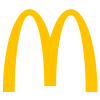 |
F | D |
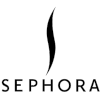 |
B+ | A |
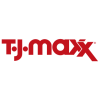 |
F | D |
 |
B+ | A |
Many retailers dramatically improved their safer chemicals performance over the course of five annual retailer report cards.
The most improved retailers since first being graded in 2016 or 2017 include:
| Most Improved Retailer (since first graded) | ||
|---|---|---|
| Retailer | First Grade (Year) | Current Grade |
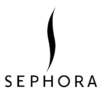 |
D (2017) | A |
| Runners Up for Most Improved Retailer (since first graded) | ||
|---|---|---|
| Retailer | First Grade (Year) | Current Grade |
 |
F (2016) | C+ |
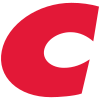 |
F (2016) | B- |
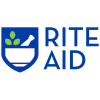 |
D+ (2017) | B+ |
| Other Noteworthy Retail Improvements (since first graded) | ||
|---|---|---|
| Retailer | First Grade (Year) | Current Grade |
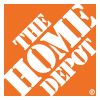 |
D+ (2016) | B |
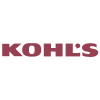 |
F (2017) | C+ |
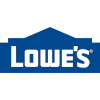 |
D (2016) | B- |
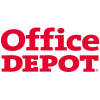 |
F (2017) | C |
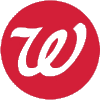 |
D (2016) | B- |
Most Improved Retail Sectors
Many retailers concentrate their sales on broad product categories. The average grade of retailers in these specific retail sectors has improved considerably over time.
Among all the retail sectors, the dollar (discount) stores scored the most gains since the fourth annual retailer report card was published in November 2019.
| Most Improved Retail Sector (since 2019) | |||
|---|---|---|---|
| Sector | Retailers Graded | Average 2019 Grade | Average Current Grade |
| Dollar (Discount) Stores | 3 | D- | D+ |
Several other retail sectors have significantly improved their safer chemical policies and practices, on average, since first being graded in 2016 or 2017. Standing out among the competition, the sectors with the greatest improvements include apparel, beauty and personal care products, and electronics.
| Most Improved Retail Sector (since first graded) | |||
|---|---|---|---|
| Sector | Retailers Graded | Average Grade (First Year) | Average Current Grade |
| Apparel | 7 | F (2017) | C- |
| Beauty & Personal Care | 3 | F (2017) | C- |
| Electronics | 2 | C- (2016) | B+ |
Average Improvements Over Time
In 2016, we graded eleven major retailers. We’ve added a new class of retailers each year, reaching a total of fifty retailers graded in the fifth annual retailer report card. Changes in the average grade of each new annual retailer class are reported below.
The table below shows that the retailers who have been repeatedly graded for the longest period of time show the greatest grade improvement. The eleven retailers first graded in 2016 have improved the most, from a D+ to a B-. The classes in the next two years also reported gains, on average. However, the average performance for the small class added in 2019 went down.
Out of 43 previously graded retailers, nearly 70% were found to have improved since their first score in the retailer report card.
The overall improvement demonstrates how the report card has helped catalyze progress among major retailers, especially since 2016. Not shown below are the seven new retailers who were evaluated for the first time in 2021 and earned an average grade of D+.
| Benchmarking retailers is driving progress over time | |||
|---|---|---|---|
| Retailers Graded for First Time | Number or Retailers | Average “Class” Grade in: | |
| First Year Evaluated | Today | ||
| Class of 2018 | 12 | F | D- |
| Class of 2017 | 19* | D | C |
| Class of 2016 | 11 | D+ | B- |
* One of these retailers has since gone out of business.
The average grade of all retailers evaluated in each year has only moved slightly from a D+ to a C-. That’s because the strong improvements reported by some retailers have been masked by the influx of poor performers summarized below. Thus, the gain in overall average grade remains modest.
In another sign of steady improvement, this year’s report finds the lowest-ever percentage of failing grades. In 2018, the report found nearly half of the retailers receiving failing grades, whereas in 2019 the report found nearly one-third. And, this year’s report finds only about one-quarter of retailers earning an F grade.
Four retailers climbed out of the hole in 2021, erasing their previous F with an improved grade: McDonald’s, TJX Companies, Ulta Beauty, and Yum! Brands.
4.THE TOXIC HALL OF SHAME
Tragically, too many retailers fail to publicly disclose even the most basic of actions needed to assure their customers that the products and packaging they sell do not contain toxic chemicals. Consumers expect better from the stores they frequent, and retailers in this year’s Toxic Hall of Shame run the risk of eroding loyalty and lost customers.
A total of 12 companies earned failing grades this year.
Remarkably, four retailers have displayed no discernible public progress whatsoever in adopting or implementing safer chemicals policies. They all scored zero points and earned an F for failure. Another eight retail chains reported minimal progress on safer chemicals—enough to score some points, but not enough to make the grade beyond an F.
Worse, almost all of the retailers below are repeat offenders. They deserve special dishonorable mention for having earned an F grade across multiple years of grading. With the exception of two retailers being graded for the first time (7-Eleven and Alimentation Couche-Tard), everyone in the Toxic Hall of Shame has failed once again to deliver progress on safer chemicals.
Toxic Hall of Shame – Zero Progress
The retailers below failed to score a single point, and earned an F grade for their failure:
Toxic Hall of Shame – Dismal Progress
The retailers named below scored some points for initial progress, but not enough to avoid an F grade. (Common brands owned by the parent company are listed in parentheses.)
- 7-Eleven
- Restaurant Brands International (Burger King, Popeyes, Tim Hortons)
- Ace Hardware
- Sobeys
- Alimentation Couche-Tard (Circle K, Couche-Tard)
- Starbucks
- Nordstrom
- Subway
